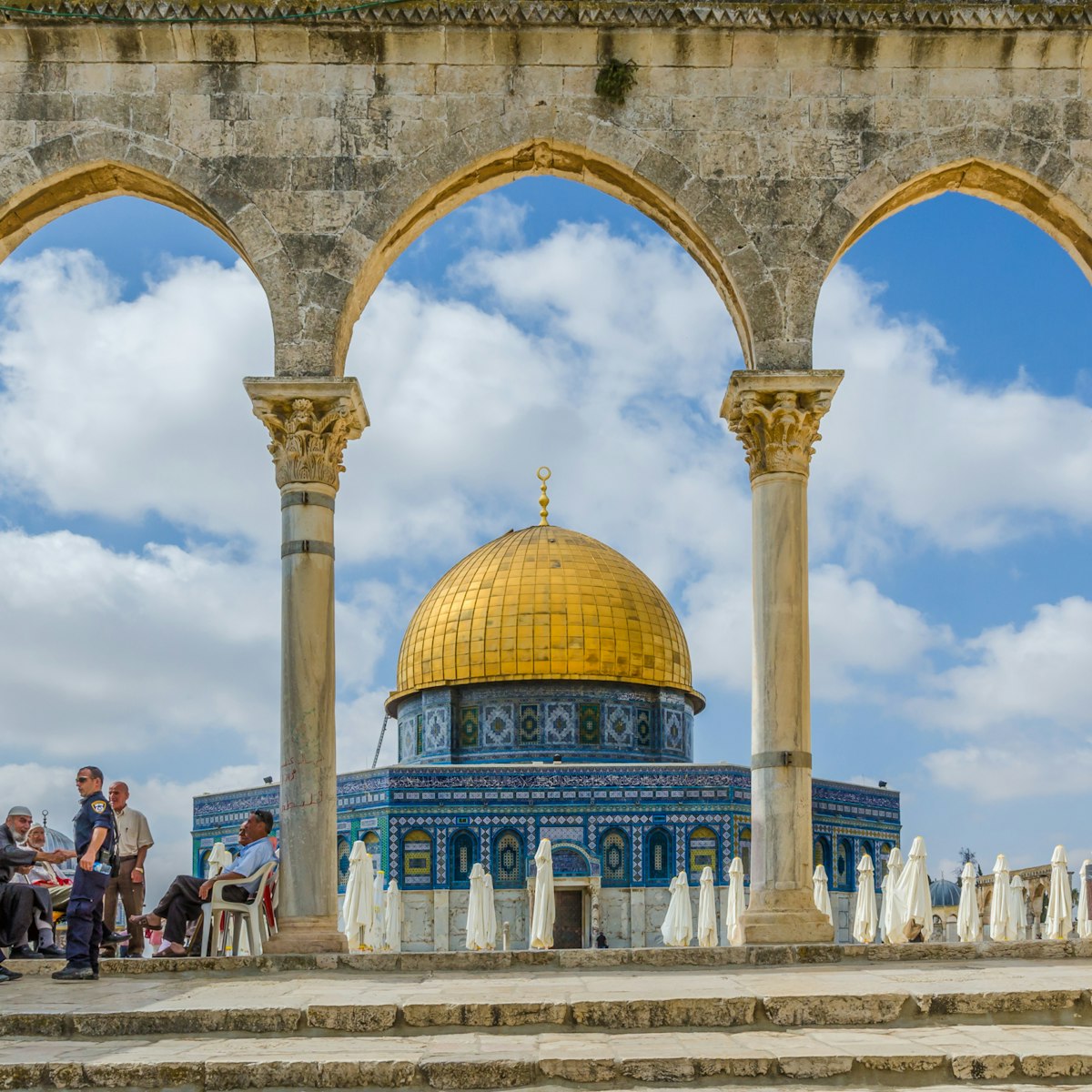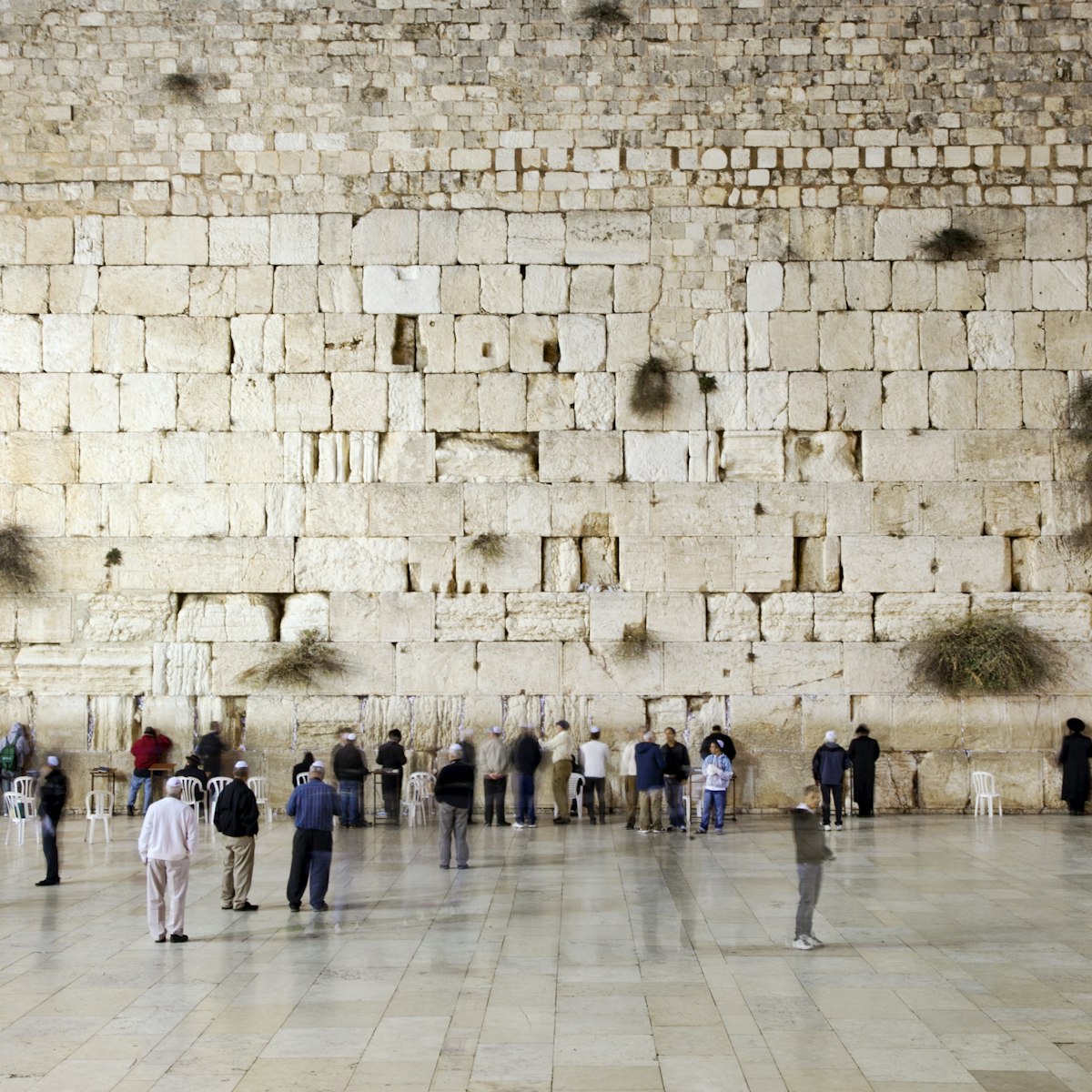King Herod’s spectacular fortress-palace, Herodium, built between 23 and 15 BCE, was known through the centuries to Arab inhabitants as the Mountain of Paradise. It rises from the Judean Desert like a flat-topped caricature of a volcano (the top is actually an extension of the natural hill, hollowed out to hold Herod’s palace), 9km south of Beit Sahour.
The complex features a series of stunning remains of Herod’s own personal ‘country club’ (which included a bathhouse and rooftop pool) and also includes King Herod’s own tomb, discovered in 2007.
Though it was sacked by the Romans in 71 CE, much remains at the site, with still more awaiting further excavation – including a network of tunnels used by Jewish rebels during their uprising against Rome. You can clamber through many of the tunnels today.
Herodium falls under ‘Area C’ and is thus under full Israeli control (you’ll see the military base at the foot of the hill); the site itself is administered by the Israeli Parks and Nature Authority. This means it is possible to access from Jerusalem without passing through Checkpoint 300, either with your own car (it is signposted from Rte 60) or via a taxi, although Israeli taxis are significantly more expensive.
To get here, take a private taxi from Bethlehem and negotiate at least an hour’s waiting time. Try to avoid Fridays, when Herodium fills with tour buses.







